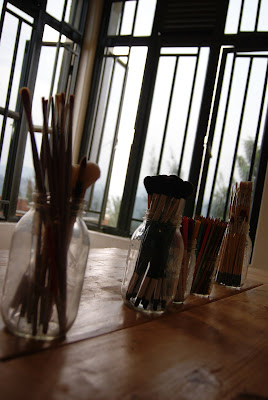Humans are weird and wonderful creatures. Meow Wolf art
collective’s House of Eternal Return
is a unique, creative, interactive embodiment of just that.
Built in a former Santa Fe bowling alley and funded in part
by George R. R. Martin, the massive 20,000 square-foot exhibit has been visited
by tens of thousands of people in the two months since it opened.
The permanent installation is incredible in its scale and variety.
Centered around a Victorian-style home, full of relics and documents that beg
visitors to uncover a story, hundreds of interactive spaces sprawl in all
directions. Crawl through the fireplace, walk through the fridge, exit through
the closet, and one enters other worlds.
From squatting baobabs covered with luminescent fungi to a
musical mastodon skeleton and futuristic creatures, from LED light instruments
in fog-filled rooms to a cartoon kitchen, Meow Wolf embraces an
impressive array of visual, auditory, and sensory mediums. The interpretation
and meaning are sure to be as varied as the visitors who roam the spaces, free
to touch, move, and explore everything around them.
The collective also embraces other aspects of the New Mexico
community. The neon shantytown doubles as a performance space. The collective
puts on workshops for children. Food trucks ply the parking lot.
After a visit to such a unique space, I was left with an
overwhelming sense of gratitude and wonder. Kudos to artists who can collaborate
to bring such variety of experience and expression to one place, and to those
who can get so many people interested in going to see it.




















































